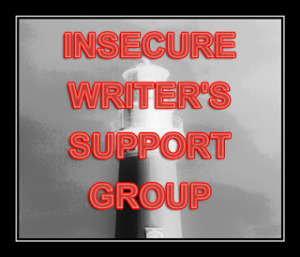Jacqui Murray's Blog, page 131
September 11, 2015
9/11… We Remember
If you have an American character and the time frame is early September, you must make note of this iconic day.It can be as simple as that your character:
lost someone on that day
remembers what they were doing that day
was inspired to [join the military] because of that day
avoids NY Ground Zero
knows someone who will be out of touch, remembering those s/he lost that day
America, we love you.
Jacqui Murray is the author of the popular Building a Midshipman , the story of her daughter’s journey from high school to United States Naval Academy. She is the author/editor of over a hundred books on integrating tech into education, adjunct professor of technology in education, webmaster for four blogs, an Amazon Vine Voice book reviewer, a columnist for TeachHUB, Editorial Review Board member for Journal for Computing Teachers, monthly contributor to Today’s Author and a freelance journalist on tech ed topics. You can find her book at her publisher’s website, Structured Learning.
, the story of her daughter’s journey from high school to United States Naval Academy. She is the author/editor of over a hundred books on integrating tech into education, adjunct professor of technology in education, webmaster for four blogs, an Amazon Vine Voice book reviewer, a columnist for TeachHUB, Editorial Review Board member for Journal for Computing Teachers, monthly contributor to Today’s Author and a freelance journalist on tech ed topics. You can find her book at her publisher’s website, Structured Learning.
Filed under: politics Tagged: 9/11, america, patriotism


September 9, 2015
It’s OK to Fail Over and Over and Try Again
Sometimes, when my blues become black, I wonder why I can’t quit this painful addiction called writing. Then, I re-watch Yuvi Zalkow’s video:
Episode 5: Writing in the Cold (I’m A Failed Writer Series) from Yuvi Zalkow on Vimeo.
Click to have Writer’s Tips delivered to your email box
Questions you want answered? Leave a comment and I’ll answer it within the next thirty days.
More on the humor of writing:
14 Things Writers Do Before 8am
8 Things Writers Can Do No One Else Can
15 Traits Critical to a Successful Writer
Jacqui Murray is the author of the popular Building a Midshipman , the story of her daughter’s journey from high school to United States Naval Academy. She is the author/editor of over a hundred books on integrating tech into education, adjunct professor of technology in education, webmaster for four blogs, an Amazon Vine Voice book reviewer, a columnist for TeachHUB, Editorial Review Board member for Journal for Computing Teachers, monthly contributor to Today’s Author and a freelance journalist on tech ed topics. You can find her book at her publisher’s website, Structured Learning.
, the story of her daughter’s journey from high school to United States Naval Academy. She is the author/editor of over a hundred books on integrating tech into education, adjunct professor of technology in education, webmaster for four blogs, an Amazon Vine Voice book reviewer, a columnist for TeachHUB, Editorial Review Board member for Journal for Computing Teachers, monthly contributor to Today’s Author and a freelance journalist on tech ed topics. You can find her book at her publisher’s website, Structured Learning.
Filed under: humor, writers tips, writing Tagged: failing, writers life, Zalkow


September 7, 2015
Labor Day: Be a Writer?
Take today to think about it. Then watch this:
..and then consider the hilarious Debbie Ohi’s take on ‘taking a break’:
 “Comic used with permission from Debbie Ridpath Ohi at Inkygirl.com.”
“Comic used with permission from Debbie Ridpath Ohi at Inkygirl.com.”
Jacqui Murray is the author of the popular Building a Midshipman , the story of her daughter’s journey from high school to United States Naval Academy. She is the author/editor of over a hundred books on integrating tech into education, adjunct professor of technology in education, webmaster for four blogs, an Amazon Vine Voice book reviewer, a columnist for TeachHUB, Editorial Review Board member for Journal for Computing Teachers, monthly contributor to Today’s Author and a freelance journalist on tech ed topics. You can find her book at her publisher’s website, Structured Learning.
, the story of her daughter’s journey from high school to United States Naval Academy. She is the author/editor of over a hundred books on integrating tech into education, adjunct professor of technology in education, webmaster for four blogs, an Amazon Vine Voice book reviewer, a columnist for TeachHUB, Editorial Review Board member for Journal for Computing Teachers, monthly contributor to Today’s Author and a freelance journalist on tech ed topics. You can find her book at her publisher’s website, Structured Learning.
Filed under: humor, writers, writing Tagged: humor, labor day


September 4, 2015
Proofing Your Manuscript–Ten Tips
Here are ten great hints from professional proofer Randall Davidson, cofounder of ProofreadingServices.Us, a proofreading company that offers manuscript proofreading.He shared these with WriterUnboxed (a wonderful resource for savvy writing tips and tricks) and I’m going to share them with you. Enjoy!
Put it away. Proofreading your novel immediately after you have written it can lead to overlooking even the most glaring errors simply because you read what you expect to read. Give yourself a few days or even weeks so that you can review your novel with fresh eyes.
Ditch the distractions. Just as it is difficult to write with the phone ringing or people interrupting, it is also frustrating to try to proofread surrounded by distractions. Find a quiet place where you will be free from interruptions before starting the process.

Take frequent breaks. Most people don’t read an entire novel in a single sitting, so you shouldn’t either. Proofread your novel in chunks of several chapters at a time so that you don’t miss errors due to fatigue.
Use the assistance of others. Ask someone with a solid understanding of grammar and composition and a love of your chosen genre to read your novel and give you an unbiased opinion. Ask them for some of their best proofreading tips as well.
Don’t rely too heavily on spelling and grammar checkers. They are handy tools and certainly have their place in writing, but they are far from infallible. There is simply no replacement for the human brain.
Read your paragraphs or chapters out of order. This will switch things up just enough that your mind won’t remember what’s next and you’ll be more likely to catch those little trouble spots.
Be aware of your most frequent errors. Do you misspell words when you are on a roll? Are you a comma abuser? Is your work dotted throughout with ellipses? Print reminders to yourself on Post-its and keep them handy so that you can reign in your most annoying habits.
Check and recheck. Those sentences that already required revisions need to be double and triple-checked for errors. Errors in tense, spelling, or phrasing may have sneaked past you due to the original correction.
Keep reference books handy. No one can possibly keep all the rules for grammar, punctuation, and spelling straight all the time. This is where thesauruses, dictionaries, and style books come into play. You should use them often.
Read your novel aloud. Sometimes your ears will catch the errors that your eyes missed.
These ten tips distill the hundreds of pages in proof reading books I’ve ordered to the basics. Thanks, Randall.
Jacqui Murray is the author of the popular Building a Midshipman , the story of her daughter’s journey from high school to United States Naval Academy. She is the author/editor of over a hundred books on integrating tech into education, adjunct professor of technology in education, webmaster for four blogs, an Amazon Vine Voice book reviewer, a columnist for TeachHUB, Editorial Review Board member for Journal for Computing Teachers, monthly contributor to Today’s Author and a freelance journalist on tech ed topics. You can find her book at her publisher’s website, Structured Learning.
, the story of her daughter’s journey from high school to United States Naval Academy. She is the author/editor of over a hundred books on integrating tech into education, adjunct professor of technology in education, webmaster for four blogs, an Amazon Vine Voice book reviewer, a columnist for TeachHUB, Editorial Review Board member for Journal for Computing Teachers, monthly contributor to Today’s Author and a freelance journalist on tech ed topics. You can find her book at her publisher’s website, Structured Learning.
Filed under: authors, writers resources, writers tips Tagged: proofing, writers resources, writing tips


September 2, 2015
#IWSG–Why do I get so few sales through Google Play?
 This post is for Alex Cavanaugh’s Insecure Writers Support Group (click the link for details on what that means and how to join. You will also find a list of bloggers signed up to the challenge that are worth checking out. The first Wednesday of every month, we all post our thoughts, fears or words of encouragement for fellow writers.
This post is for Alex Cavanaugh’s Insecure Writers Support Group (click the link for details on what that means and how to join. You will also find a list of bloggers signed up to the challenge that are worth checking out. The first Wednesday of every month, we all post our thoughts, fears or words of encouragement for fellow writers.
This month’s insecurity – Why do I get more sales through Teachers Pay Teachers and Scribd than Google Play.
That doesn’t make sense, does it? TpT and Scribd are tiny compared to Google Play. Yes, I do promote TpT in my Ask a Tech Teacher sidebar, but Google Play doesn’t offer a store widget. I’d have to separately link each book (anyone know differently?). I’ve spent more time setting up Google Play than either TpT or Scribd (it’s more complicated to me), but got much less in return.
Anyone have a similar experience? Or a different one? Does anyone sell on Google Play?
More IWSG articles:
None of My Marketing Seems to Work
Jacqui Murray is the author of the popular Building a Midshipman , the story of her daughter’s journey from high school to United States Naval Academy. She is the author/editor of over a hundred books on integrating tech into education, adjunct professor of technology in education, webmaster for four blogs, an Amazon Vine Voice book reviewer, a columnist for TeachHUB, Editorial Review Board member for Journal for Computing Teachers, monthly contributor to Today’s Author and a freelance journalist on tech ed topics. You can find her book at her publisher’s website, Structured Learning.
, the story of her daughter’s journey from high school to United States Naval Academy. She is the author/editor of over a hundred books on integrating tech into education, adjunct professor of technology in education, webmaster for four blogs, an Amazon Vine Voice book reviewer, a columnist for TeachHUB, Editorial Review Board member for Journal for Computing Teachers, monthly contributor to Today’s Author and a freelance journalist on tech ed topics. You can find her book at her publisher’s website, Structured Learning.
Filed under: writers, writing Tagged: insecure writers group, iwsg, writers


August 31, 2015
How I’m Doing on ‘To Hunt a Sub’
 After a four-year hiatus from the first book in my Delamagente-Rowe series, I finally think I’ll get it done. I had a few interruptions–agent interest in the series’ second book, deadline for two non-fic series I write–but I think I’m going to make it this time. The short blurb for this thriller–still a work-in-progress is:
After a four-year hiatus from the first book in my Delamagente-Rowe series, I finally think I’ll get it done. I had a few interruptions–agent interest in the series’ second book, deadline for two non-fic series I write–but I think I’m going to make it this time. The short blurb for this thriller–still a work-in-progress is:
…a brilliant PhD candidate, a cynical ex-SEAL, and a quirky bot team up against terrorists intent on stealing America’s most powerful nuclear weapon, the Trident submarine.
Here’s what I did this past month:
queried agents. I’ll be doing this for a few weeks.
waited on agent responses. Tick tock…
collected marketing ideas from you-all. Here’s a master list of 29+ marketing ideas from writers like you. Share it with writer friends; add your own ideas.
talked to professional editors. Just in case. It’s good to be prepared. I’d like this on the virtual shelves in time for Christmas.
thought about the cover. I have found a few people who might be able to help with that.
tried to clean up other writing obligations so I can concentrate on To Hunt a Sub‘s next step.
By this time next month, I hope to be talking to one agent or working with an editor. Either one is fine with me.
More on To Hunt a Sub’s progress:
How I’m Doing on ‘To Hunt a Sub’
How I’m Doing on ‘To Hunt a Sub’
How I’m Doing on ‘To Hunt a Sub’
Jacqui Murray is the author of the popular Building a Midshipman , the story of her daughter’s journey from high school to United States Naval Academy. She is the author/editor of over a hundred books on integrating tech into education, adjunct professor of technology in education, webmaster for four blogs, an Amazon Vine Voice book reviewer, a columnist for TeachHUB, Editorial Review Board member for Journal for Computing Teachers, monthly contributor to Today’s Author and a freelance journalist on tech ed topics. You can find her book at her publisher’s website, Structured Learning.
, the story of her daughter’s journey from high school to United States Naval Academy. She is the author/editor of over a hundred books on integrating tech into education, adjunct professor of technology in education, webmaster for four blogs, an Amazon Vine Voice book reviewer, a columnist for TeachHUB, Editorial Review Board member for Journal for Computing Teachers, monthly contributor to Today’s Author and a freelance journalist on tech ed topics. You can find her book at her publisher’s website, Structured Learning.
Filed under: To Hunt a Sub


August 28, 2015
7 Tools I Use to Organize My Stories
Efriend Sacha Black interviewed author Jillian Davis and asked about the tools she used to build her story. Sacha wasn’t asking whether she used a computer or pen-and-paper, rather what literary tools-such as character profiles and timelines. I found myself nodding my head over every one Jillian mentioned.
But I wonder how many people use the sort of tools I do. When you Google pictures of writers, you often get something like this:
…or this:
I’m more this:
Let me share my writer’s tools and tell me if you do the same:
Pre-draft
I pre-draft in a spreadsheet. It’s about a dozen columns and hundreds of rows. I often rearrange the rows as a plot point changes and add rows to enhance detail. When I’m done with this pre-draft, I convert the spreadsheet to text and start the editing process.
Here’s what it looks like:
Character profiles
I fill out an extensive questionnaire on each character. I want to get to know the traits, motivations, interests that each of their friends or family would know about them. Invariably, it proves inadequate as the story unfolds and I end up looking at events through their eyes to answer the question, “What would my character really do in this situation?”
Here’s an example:
Timeline
I build this in Excel/Google Sheets so I can make it as detailed as possible. When I’m trying to find a character’s activity, I Ctrl+F (see my yellow highlights for ‘Zeke’) to find their name! Truth,it’s most beneficial when I’m setting it up as it clarifies actions and points out temporal problems. Once it’s established, it almost becomes cumbersome to use.
Support Materials
This is information I’ve collected while researching for my story. Sometimes, it’s the entire bit; other times, just a link. For my current story, it’s so long, I had to add a Table of Contents with internal links to the sections so I could find what I was looking for. A simple Ctrl+F search returned too long a list.
Here’s what it looks like for To Hunt a Sub:
Google Earth map
This was to track my character around the world as the story progressed. Often, I needed detail like:
How long did it take to get from Point A to Point B (I measured with Google Earth’s ruler
What’s around Point C (I zoomed in on Google Earth)
Where was a geographic location that fits the needs of the story (for example, I was looking for a North Korean sub base–found it, thankfully in a spot that worked for my story)
Needed the latitude and longitude of a location (Google Earth grid lines provide that
Here’s a screenshot of the Korea geographic activity in my story, mapped in Google Earth:
Pictures
So I can visualize what’s going on. Here are some I’ve used:








Cuts
I keep all the cuts from my story in case I change my mind. That happens more than I’ll admit to. For To Hunt a Sub, it’s 11 pages, size 10 font:
How about you? How do you plan and write your story?
More on writing a novel:
7 Reasons For and Three Against Critique Groups
Jacqui Murray is the author of the popular Building a Midshipman , the story of her daughter’s journey from high school to United States Naval Academy. She is the author/editor of dozens of books on integrating tech into education, webmaster for six blogs, an Amazon Vine Voice book reviewer, a columnist for Examiner.com and TeachHUB, Editorial Review Board member for Journal for Computing Teachers, monthly contributor to Today’s Author and a freelance journalist on tech ed topics.
Filed under: editing


August 26, 2015
Tech Tip for Writers #72: How to Move Pics Around in Documents
 Tech Tips for Writers is an occasional post on overcoming Tech Dread. I’ll cover issues that friends, both real-time and virtual, have shared. Feel free to post a comment about a question you have. I’ll cover it in a future Tip.
Tech Tips for Writers is an occasional post on overcoming Tech Dread. I’ll cover issues that friends, both real-time and virtual, have shared. Feel free to post a comment about a question you have. I’ll cover it in a future Tip.
Q:I put a picture in my document, but it won’t move. How do I fix that?
A: For a lot of word processing tools, default when inserting a picture on a page is ‘inline’–it treats it as text. Like words on a document, it can’t be easily moved.
Here’s how to fix that in Word:
click on the picture
Select ‘Picture Tools’ at the top of the screen
Select ‘wrap text’ from the ribbon
Select ‘tight’ to have words to wrap around it.
If you’re in Google Docs, when you click the image, below the image is the option for ‘in-line’ or ‘wrap’. Select ‘wrap’.
Now drag and drop it anywhere you’d like. It’s that simple.
Questions you want answered about digital tools for writers? Email me at askatechteacher at gmail dot com and I’ll answer it within the next thirty days.
Jacqui Murray is the author of the popular Building a Midshipman , the story of her daughter’s journey from high school to United States Naval Academy. She is the author/editor of dozens of books on integrating tech into education, webmaster for six blogs, an Amazon Vine Voice book reviewer, a columnist for Examiner.com and TeachHUB, Editorial Review Board member for Journal for Computing Teachers, monthly contributor to Today’s Author and a freelance journalist on tech ed topics.
Filed under: tech tips for writers Tagged: images, writers tips


August 24, 2015
Use Photos to Develop Your Novel
My current ms is so far from its beginnings that I’d almost forgotten it started with photos to draw character profiles. I remember how much fun it was browsing through internet images of paleoanthropologists, staring into their eyes to see if they were Kali or Zeke (my two main characters). Did they have her fragile spirit or his swash-buckling SEAL-gone-scientist persona? Was there that geeky spark in her eye that indicated no wild data point was going to derail her concentration. Once I found the right image, I read everything I could find about that sort of person and came up with a character that worked. Then, I pasted the pictures to the walls of my office so every time they were in scene, I’d see them–notice how they moved, remember how their head tilted in thought or furrowed their brows in confusion.
Look at these pictures. Do you see a character in your story?











Settings were the same. A setting can be as much a character as a person–when it’s done well. It shapes action, ascribes motivation, and dictates decisions. A rainstorm can hide a murder or cause it. A suburban house with a white picket fence can provide the seedbed for a serial murderer or a powerful crime fighter. What do you see in these settings?












To make settings authentic, I searched out locations on Google Earth, then traveled the streets, the towns, the neighborhoods to get a sense of what my characters would experience. If my characters walked from Columbia University to an apartment a couple of blocks away, I walked with them to see what bodega they passed, how busy were the streets, what type of people visited local businesses. This way, I could add flavor and emotion to my story. A few times, I had to adjust the scene because Google Street View told me it couldn’t have happened the way I’d written. Anyone with a wide audience knows readers notice your mistakes, so the less that slip through, the better.







What did I learn from all this? Don’t skip visualizing characters and settings. Take the time to explore your story’s fundamentals and then let them drive the story.
More on authentic writing:
Tech Tip for Writers #65: Google Street View
How to Virtually Visit a Location You Can’t Drop In On
Writer’s Tip #47: Authenticate Setting
Click to have Writer’s Tips delivered to your email box
Questions you want answered? Leave a comment and I’ll answer.
Jacqui Murray
is the author of the popular
Building a Midshipman
, the story of her daughter’s journey from high school to United States Naval Academy. She is the author/editor of dozens of books on integrating tech into education, webmaster for six blogs, an
Amazon Vine Voice
book reviewer, a columnist for Examiner.com and TeachHUB, Editorial Review Board member for Journal for Computing Teachers, monthly contributor to Today’s Author and a freelance journalist on tech ed topics.
Filed under: characters, setting, writers tips, writing Tagged: Google Earth, photos


August 17, 2015
Writer’s Tip #75: Break the Rules
 When you read your story, does it sound off, maybe you can’t quite put your finger on it, but you know you’ve done something wrong? Sometimes–maybe even lots of times–there are simple fixes. These writer’s tips will come at you once a week, giving you plenty of time to go through your story and make the adjustments.
When you read your story, does it sound off, maybe you can’t quite put your finger on it, but you know you’ve done something wrong? Sometimes–maybe even lots of times–there are simple fixes. These writer’s tips will come at you once a week, giving you plenty of time to go through your story and make the adjustments.
This tip is from Robert Masello, award-winning journalist, television writer, and bestselling author of many novels and nonfiction books like the Medusa Amulet and Vigil. It’s #102 in his Kindle ebook, Robert’s Rules of Writing: 101 Unconventional Lessons Every Writer Should Know (Writers Digest Books 2011). That’s right. He’s showing not telling. We writers understand that approach.
Here’s what he says:
Rule 102. Break the Rules. The cover of the book says 101 Rules—and that’s why I’m writing 102. Just to prove that rules are made for breaking. For example, for every writer who writes in the morning, there’s one who writes only at night. For every writer who plows ahead, never looking back, there’s one who agonizes over every word and cannot go forward without polishing every syllable that has come before. For every writer who works from an elaborate outline, there’s one who flies by the seat of his pants.
Click to have Writer’s Tips delivered to your email box
Questions you want answered? Leave a comment and I’ll answer it within the next thirty days.
Jacqui Murray is the author of the popular Building a Midshipman , the story of her daughter’s journey from high school to United States Naval Academy. She is the author/editor of over a hundred books on integrating tech into education, adjunct professor of technology in education, webmaster for four blogs, an Amazon Vine Voice book reviewer, a columnist for TeachHUB, Editorial Review Board member for Journal for Computing Teachers, monthly contributor to Today’s Author and a freelance journalist on tech ed topics. You can find her book at her publisher’s website, Structured Learning.
, the story of her daughter’s journey from high school to United States Naval Academy. She is the author/editor of over a hundred books on integrating tech into education, adjunct professor of technology in education, webmaster for four blogs, an Amazon Vine Voice book reviewer, a columnist for TeachHUB, Editorial Review Board member for Journal for Computing Teachers, monthly contributor to Today’s Author and a freelance journalist on tech ed topics. You can find her book at her publisher’s website, Structured Learning.
Filed under: writers tips, writing Tagged: break the rules, writers tips














